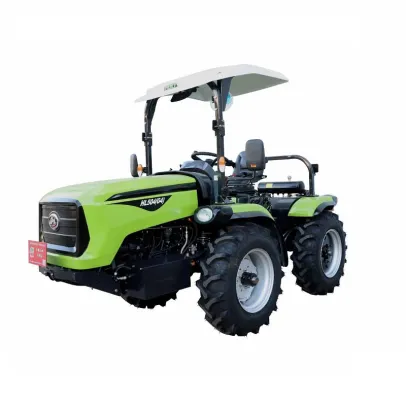Jan. 25, 2024
Agriculture
The stability of a tractor in hilly terrain is crucial to ensure safety and efficient performance. Several factors contribute to the stability of a tractor on uneven or hilly surfaces. Here are some considerations when looking for the most stable tractor for hilly terrain:
1. Low Center of Gravity:
Opt for tractors with a low center of gravity. Tractors with a lower center of gravity are less likely to tip over on inclines. This stability feature is particularly important when navigating steep hills.
2. Wide Wheelbase:
Choose a tractor with a wide wheelbase. A wider wheelbase provides better stability, distributing the weight more evenly across the tractor. This helps prevent tipping and enhances overall balance on hilly terrain.
3. Four-Wheel Drive (4WD):
Tractors equipped with four-wheel drive (4WD) offer better traction and control on uneven surfaces. 4WD is especially beneficial when climbing steep slopes or descending hills, providing enhanced stability and minimizing the risk of slippage.

4. Differential Lock:
Look for tractors with a differential lock feature. This allows both rear wheels to turn at the same speed, improving traction in challenging terrain. It is particularly useful when one wheel encounters resistance, such as on a hillside.
5. Heavy-Duty Suspension:
Opt for Hilly mountain tractors with heavy-duty suspension systems. A robust suspension helps absorb shocks and bumps, providing a smoother ride on uneven surfaces. This contributes to both operator comfort and overall stability.
6. Traction Control Systems:
Tractors with advanced traction control systems enhance stability by adjusting power to individual wheels based on their traction. This feature is beneficial when navigating hilly terrain with varying levels of grip.
7. Roll-Over Protective Structure (ROPS):
Ensure that the tractor is equipped with a Roll-Over Protective Structure (ROPS). ROPS is a safety feature designed to protect the operator in the event of a rollover. It adds an extra layer of safety when operating on hills.
8. Slow Speed and Control Features:
Look for tractors that offer slow speed control features. The ability to operate at low speeds allows for better control when ascending or descending hills. Some tractors also come with cruise control for maintaining consistent speeds.
9. Terrain-Specific Tires:
Consider using terrain-specific tires designed for hilly or mountainous conditions. These tires offer better traction and grip on uneven surfaces, contributing to the overall stability of the tractor.
10. Operator Training:
Adequate operator training is crucial. Ensure that the tractor operator is trained in safe hillside operation, understanding the limitations and features of the tractor for optimal stability.
When choosing a tractor for hilly terrain, it's essential to assess these features and select a model that aligns with the specific challenges posed by the landscape. Consulting with tractor experts or manufacturers can also provide valuable insights into the most suitable options for your particular hilly terrain needs.
Previous: Are pears very high in sugar?
Next: Discover the Health Benefits & Tasty Uses of Walnut Kernels 1/8: Your Complete Guide
If you are interested in sending in a Guest Blogger Submission,welcome to write for us!
All Comments ( 0 )